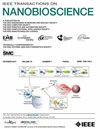Carbon Nitride-Supported Copper Oxide for Non-Enzymatic Glucose Sensor: A Multi-Platform Approach Utilizing Electrochemical, Field Effect Transistor, and Microcontroller-Based IoT Systems
IF 4.4
4区 生物学
Q1 BIOCHEMICAL RESEARCH METHODS
引用次数: 0
Abstract
The new generation of glucose biosensors has attracted significant research interest due to its fast response, high stability, reproducibility, portability and low detection limit. In this work, various types of high-performance non-enzymatic glucose sensors are proposed, based on carbon nitride supported copper oxide nanoparticles (CNCO). The hybrid system was synthesized using a modified deposition-precipitation route where the copper oxide nanoparticles were dispersed on the carbon nitride matrix. The X-ray diffraction pattern revealed that the copper oxide nanoparticles exhibit a high degree of crystallinity with a monoclinic structure. The synthesized hybrid material was used as a catalyst for the electrochemical detection of glucose in the range of 0 to 15.6 mM, demonstrating a detection limit of 0.59 mM and a sensitivity of 0.53 mA.mM用于非酶葡萄糖传感器的碳氮负载氧化铜:利用电化学,场效应晶体管和基于微控制器的物联网系统的多平台方法。
新一代葡萄糖生物传感器以其快速响应、高稳定性、可重复性、便携性和低检测限等优点引起了广泛的研究兴趣。在这项工作中,提出了基于氮化碳负载的氧化铜纳米颗粒(CNCO)的各种类型的高性能非酶葡萄糖传感器。采用改进的沉积-沉淀工艺,将氧化铜纳米颗粒分散在氮化碳基体上,合成了复合体系。x射线衍射结果表明,纳米氧化铜具有单斜晶型结构,结晶度高。用合成的杂化材料作为催化剂,对0 ~ 15.6 mM范围内的葡萄糖进行了电化学检测,检测限为0.59 mM,灵敏度为0.53 mA.mM-1.cm-2。基于CNCO的扩展门场效应晶体管在不同葡萄糖浓度(1 ~ 9 mM)下的检测限和灵敏度分别为0.59 mM和0.065 mA.mM-1。分别cm-2。本研究还实现了一种基于微控制器的葡萄糖传感器,在2-8 mM的浓度范围内,其灵敏度值为1.46 mV/mM。氮化碳负载的氧化铜基葡萄糖传感器具有出色的再现性,足够的稳定性和高选择性,使其成为现实传感应用的有希望的候选人。
本文章由计算机程序翻译,如有差异,请以英文原文为准。
求助全文
约1分钟内获得全文
求助全文
来源期刊

IEEE Transactions on NanoBioscience
工程技术-纳米科技
CiteScore
7.00
自引率
5.10%
发文量
197
审稿时长
>12 weeks
期刊介绍:
The IEEE Transactions on NanoBioscience reports on original, innovative and interdisciplinary work on all aspects of molecular systems, cellular systems, and tissues (including molecular electronics). Topics covered in the journal focus on a broad spectrum of aspects, both on foundations and on applications. Specifically, methods and techniques, experimental aspects, design and implementation, instrumentation and laboratory equipment, clinical aspects, hardware and software data acquisition and analysis and computer based modelling are covered (based on traditional or high performance computing - parallel computers or computer networks).
 求助内容:
求助内容: 应助结果提醒方式:
应助结果提醒方式:


